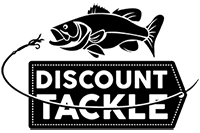
Understanding Walleye Behavior in Summer: Tips for Effective Targeting
To effectively target summer Walleye, the angler needs to understand their natural feeding behavior and habitat preferences during this time of year. As water temperatures rise, Walleye tend to move to deeper, cooler waters during the day to escape the heat. Summertime Walleye typically hang out at depths ranging from 15 to 35 feet, seeking cooler water with ample oxygen. They often gather around structures like submerged points, humps, and deep weed bed edges where baitfish congregate. During low-light conditions, such as early morning, or late evening, they venture into areas like shallow weed beds, rocky shorelines, and sand flats where baitfish like shad, minnows, and juvenile panfish are abundant. In these conditions, Walleye become highly active and aggressive feeders, taking advantage of the cover provided by the vegetation to ambush their prey.
Effective Baits and Techniques
Jerkbaits
When to Use: Low-light periods like early morning, late evening, or overcast days.
How to Use: Cast near rocky shorelines or along weed bed edges during low-light periods when Walleye are more active. Use a retrieve pattern with erratic jerks and pauses to mimic an injured baitfish, which can trigger aggressive strikes from feeding Walleye. Experiment with different retrieval speeds and pause durations to match the fish's activity level on that particular day.
Staff Suggestions:
- Rapala Shadow Rap Shad 09 Jerkbait
- Lucky Craft Pointer 78 Suspending Shallow Jerkbait
- Bandit B-Rotan 4 5/8 inch Jerkbait/Trolling Plug
- Bomber B15 Long A 4 1/2 inch Shallow Jerkbait

Crankbaits
When to Use: Low-light periods when Walleye are actively feeding in the mid to upper-water columns.
How to Use: Cast or troll crankbaits over weed beds, along drop-offs, or around rocky structures. Crankbaits that dive to the mid-depths can be very effective when Walleye are suspended off the bottom.
Staff Suggestions:
- Berkley Money Badger Trolling Plug / Crankbait
- Storm Original Hot 'N Tot 05 Crankbait
- Rapala Shad Rap 2 inch Medium Diving Crankbait SR05
- SPRO John Crews Little John 50 Shallow Crankbait
Deep Diving Trolling Plugs
When to Use: Midday when Walleye are congregated in deeper cooler areas. Look for structure and contour readings from your electronic graphs for maximum efficiency.
How to Use: Troll deep diving baits along the contours of submerged structures. Vary your speed to find the optimal trolling speed that produces the most bites. These baits are excellent for covering a lot of water and locating active fish.
Staff Suggestions:
- Bandit Walleye Deep 4 3/4 inch Trolling Plug
- Rapala Husky Jerk 14 Jerkbait/Trolling Minnow
- Storm Original Deep ThunderStick 4 3/8 inch Jerkbait/Trolling Minnow
- Berkley Flicker Minnow Jerkbait/Trolling Hard Minnow - 1/2 oz

Worm Harnesses
When to Use: Any time of day, especially effective in deeper water.
How to Use: Target areas such as drop-offs, and humps where Walleye are likely to feed. Worm harnesses with a Colorado blade offers increased vibration and flash, making it highly effective in deeper waters or low-light conditions. The Colorado blade's distinct thumping action attracts walleye from a distance, while the live worm/minnow adds a natural scent and movement, enticing strikes. Slowly troll the harness along the targeted areas, adjusting your speed and depth to match the Walleye's behavior and preferences.
Staff Suggestions:
- Lindy Rig Snell Crawler 2-Hook Bait Rig 4 pack
- Lindy Crawler Harness Colorado Blade
- Berkley Walleye Rig Colorado Blade
- Northland Tackle Baitfish Spinner Harness
General Tips
Time of Day: Focus on early morning and late evening for shallow water action, and midday for deeper water strategies.
Location: Target structures such as drop-offs, humps, and weed edges. Use electronics to locate schools of baitfish as this is a good indication hungry fish are nearby.
Weather: Cloudy days and slight wind can improve Walleye activity and make them more approachable.
Presentation: Adapt your presentation to the Walleye's mood. If they are sluggish, slow down your retrieve. If they are active, speed it up or add more erratic movements.
Conclusion
Successful summertime Walleye fishing hinges on understanding their behavior and habitat preferences. By targeting deeper, cooler waters during the day and moving to shallower, structure-rich areas during low-light periods, anglers can effectively locate and catch Walleye. Jerkbaits, Crankbaits, Deep-Diving Trolling Plugs, and Worm Harnesses are proven techniques that cater to a Walleye's summer feeding habits. Each method offers distinct advantages, from mimicking injured baitfish to reaching deeper zones where Walleye congregate. By adjusting your approach based on time of day, weather conditions, and Walleye activity levels, you can maximize your chances of a successful and rewarding fishing experience.
For more tips, tactics, and the best gear for summer Walleye fishing, visit DiscountTackle.com. Happy fishing, and enjoy the summer season with great catches!


